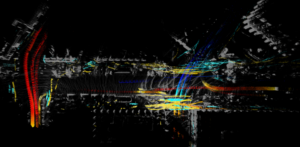
Blackmore Sensors and Analytics, Inc. announced two new product lines: the Blackmore AFDL is a Doppler lidar system specifically designed for autonomous fleet deployment. And the flexible Blackmore LDP is a development platform for early deployment into emerging autonomous markets such as long-haul trucking and air taxi systems. These two products address the massive demand for smarter, interference-free lidar solutions across the automotive market and beyond.
With more than $1 billion invested in the lidar space since 2015, it’s increasingly difficult for end users to identify a solution that delivers as promised. This is because the majority of lidar vendors focus on using amplitude modulation (AM) pulse-based lidar technologies. As a result, OEMs and suppliers are struggling with the inadequate data created by these power-hungry AM lidar sensors. And as lidar use becomes more prevalent, interference-prone AM systems are less effective and unsafe.
To address this, in 2015 Blackmore introduced the world’s first frequency-modulation (FM) lidar systems for autonomous vehicles, which measure both range and velocity simultaneously. For context, chipset-driven industries – including cell phones, automotive radars and GPS systems – also migrated from AM to FM modulation in order to deliver interference-free data at long range, using less power. “The reality is that physics ultimately wins, no matter how much funding chases inferior alternatives,” said Dr. Randy Reibel, CEO and co-founder of Blackmore. “But more importantly, FM-based Doppler lidar sensors are safer for self-driving applications.”
Blackmore’s team has spent more than 10 years refining FM techniques and has been shipping high-performance lidar systems that are easy to use for automotive applications since 2017. Blackmore continues to propel this advanced technology forward with its two new products.
Developers building autonomous fleets have long craved Doppler lidar, in order to access the tremendous benefits provided by its velocity-enabled point clouds. Blackmore’s AFDL resolves the challenges that stymied AM lidar. As a result, fleets will see a dramatic increase in reliability and lower operating costs by reducing time-to-perception and data-annotation overhead.
Specifically, the multi-beam Doppler lidar sensor delivers instantaneous velocity and range data beyond 450 meters, with power consumption and size similar to a small laptop. The system supports a 120 x 30-degree field of view, software-defined operation, precise velocity measurements with accuracy down to 0.1 meters/second on objects moving up to 150 m/s (335 mph), and measurement rates in excess of 2.4 million points/second. Blackmore’s AFDL is available for pre-order and will ship to customers in Q2 for less than $20,000. Samples are shipping to strategic partners now.
From air taxis and long-haul trucking to airport operations and industrial warehouse robotics, a number of industries want access to Blackmore’s precise, velocity-informed lidar. To address this demand and support expansion into new markets, Blackmore is now shipping its Lidar Development Platform (LDP). The highly flexible platform pairs Blackmore’s powerful lidar engine with interchangeable optical sensor heads to make it easy for companies to explore, test and adapt Doppler lidar for their specific needs. “Development partners want to be part of the design process, and this new lidar platform helps our customers efficiently hone their spec requests and better understand the advantages that Doppler lidar brings to their applications,” said Jim Curry, co-founder and vice president of analytics at Blackmore.
Because Blackmore uses software-defined lidar data, customers can tailor the operational parameters – including field of view, range, point density and scan speed – on the fly with its flexible API. The long-range forward-look optical head covers a 40 x 40-degree field of view, provides two beams to increase point throughput to greater than 1.2 million points/second, and can reach out well beyond 500 meters of range extent. Additional sensor heads will be introduced over time, and prices will vary depending upon configuration. Blackmore’s LDP is available for order immediately.
Product images and videos of Blackmore’s Doppler Lidar in action can be accessed here.

Leave a Reply